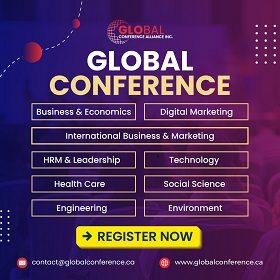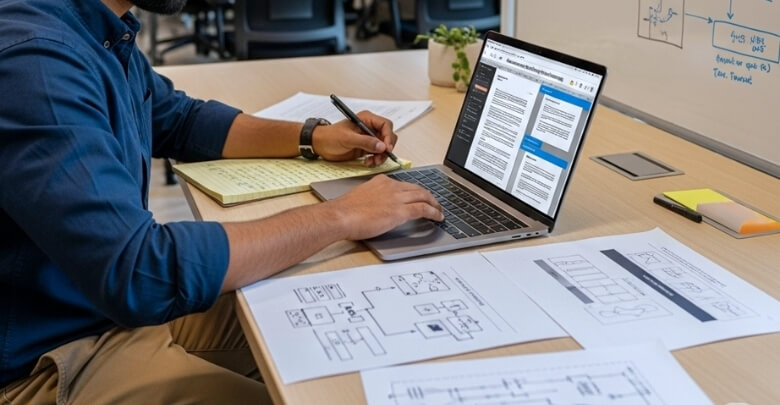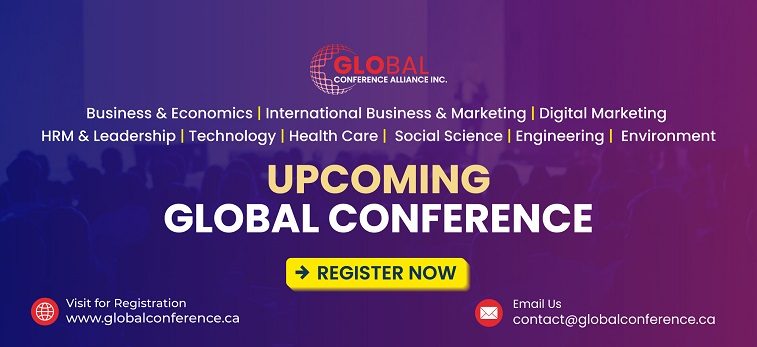Research papers for computer engineering conferences require more than technical skills. You’ll want your paper to stand out, whether it is creating something new or improving previous work. You might already be thinking about the 6 tips to improve your computer engineering conference research papers.
Improve your computer engineering paper with six key tips: define one clear goal, write a strong abstract, compare related work, explain methods clearly, use simple writing, and end with real-world impact. Clear, focused, and honest writing helps your paper stand out.
If you’re curious about how to make your paper better, you’re in the right place. You’ll find helpful details on writing, structure, feedback, and even what to bring along. Everything you need is here to make your paper strong and your conference experience smooth.
6 Tips to Improve Your Computer Engineering Conference Research Papers
Writing a strong paper for a computer engineering conference takes smart planning. It’s not just about your ideas, but how clearly you explain them. Reviewers want to see clear writing, solid work, and new thoughts. Follow these tips to make your paper better and more focused.

1. Clear Contribution
Before writing anything, decide exactly what your paper is trying to show. Be specific about the problem, the new idea, and what you’re not covering. This helps you stay focused and not add extra, confusing points. Don’t try to include everything—pick one clear goal and stick to it. That way, your paper stays sharp and easy to follow. A focused paper always gives a better message to the reader.
2. Strong Start
Start your paper with a short abstract that explains your main idea clearly. Include the problem, your solution, the results, and why it matters. Then, use the introduction to explain why the problem is important today. Add a few lines about past work to give background. Show what makes your idea different and why it’s useful. This helps the reader quickly understand your work and its importance.
3. Related Work
Show the reader that you know what others have done in this area. Talk about past research papers, what they did well, and what they missed. Then explain how your work is different or how it improves something. Avoid just listing paper titles—add real thoughts. If your paper builds on older work, say exactly how it does. This proves you understand the topic and your work has real value.
4. Method and Testing
Every paper needs a clear explanation of how the work was done. Write down tools, steps, settings, and all test details with care. Your work should be easy to repeat by someone else reading it. If you’re planning for global events like upcoming conferences in USA, Canada, or any other country, a detailed and tested method helps your work stand out. Add graphs and tables to show your results clearly and completely.
5. Simple Writing
Use short, easy words and make each sentence clear and direct. Write one idea per paragraph and don’t repeat things without reason. Avoid long, confusing words when a simple word will do better. Follow all formatting rules given by the conference for paper layout. This includes font size, margins, image captions, and reference styles. Reviewers prefer papers that look neat and are easy to read from beginning to end.
6. Wrap-up and Beyond
The last part of your paper should talk about why your work matters. Explain how it could help in real life, like in devices or systems. Share any limits your work has and be honest about what’s missing. Suggest what someone else could study next in this area. When you think ahead and share new ideas, it makes your paper more complete and thoughtful to read.
Every small improvement can help your paper stand out from others. Always write clearly so others can understand your work quickly. Use simple steps to share your methods and results with care. Remember, a strong paper always starts with clear thinking and planning.
How to Structure a Computer Engineering Conference Paper for Maximum Impact?
Writing a computer engineering conference paper can feel tricky at first, especially if you’re not sure how to set things up the right way. But once you learn the basic structure, it all gets easier and clearer. Let’s explore how to do it step by step.
Catchy Abstract
The abstract is like a quick snapshot of your whole paper. It should tell readers what your topic is, what you did, and what you found out. Keep it short and clear. Don’t add any confusing words. Just focus on giving the main idea of your paper in a few simple lines. This part helps readers decide if they want to read more.
Strong Introduction
Begin the introduction by explaining the main topic and the problem you’re addressing. Start by talking about the problem or topic. Then say what you are trying to do with your paper. You can also mention why this topic is important. Keep it simple and clear so that anyone can understand what’s coming up in the rest of the paper.
Simple Methodology
This part tells how you did your work or research. Think of it like showing the steps you followed to reach your results. You can write about any tools, programs, or plans you used. Try to explain each step in a way that others can repeat it. Don’t skip anything important. Clear and simple steps make this part strong and useful.
Results and Findings
You write what you found after doing your work here. You don’t have to explain everything in deep detail—just show what happened after your method was used. You can use tables or graphs if needed, but explain what they show. Try to keep your writing neat and focused. This part should match what you wrote about earlier in your method section.
Clear Conclusion
The conclusion is where you wrap things up. Talk about what your results mean and how they answer the question or problem you started with. Keep it short and to the point. You can also write a small idea about what can be done next. But don’t bring up brand new ideas here. Just end with a simple summary of your paper.
Writing a computer engineering paper doesn’t have to be hard if you follow a clear structure. Each section has its own job, so don’t mix them up. Keep your language simple and your ideas easy to follow. A well-organized paper always leaves a strong impression.
How Peer Feedback Can Help Improve Your Computer Engineering Conference Paper Before Submission?
Getting a paper ready for a computer engineering conference takes time and effort. Even when you think it’s perfect, there’s always something that can be better. That’s where feedback from others can really help. Want to know how feedback can make your paper even stronger? Keep reading to find out!
- Ask Early: Getting feedback when your paper is still in progress helps you fix problems before they get too big or hard to change.
- Choose the Right People: Always share your paper with someone who understands the topic and can give you honest and helpful advice.
- Be Open-Minded: Don’t take comments personally. Feedback is meant to help you improve your work, not to hurt your feelings.
- Look for Clarity Issues: Ask others if any part of your paper was confusing or hard to understand so you can make it clearer.
- Check for Mistakes: A fresh pair of eyes can catch small spelling or grammar mistakes that you may have missed while editing.
- Improve Your Flow: Sometimes your ideas might be good, but the order or way they’re written may confuse readers. Ask if the flow makes sense.
- Use Suggestions Wisely: You don’t have to follow every suggestion, but think about each one and use the ones that really make your paper better.
Getting early feedback not only sharpens your arguments and improves clarity but also boosts your confidence when you’re ready to submit a research paper to a computer engineering conference for review and potential presentation.
How to Cite Sources Properly in Computer Engineering Conference Research Papers?
Citing sources the right way can feel tricky at first, but it’s actually pretty simple once you get the hang of it. Different computer engineering conferences ask for different styles, so knowing how each one works is super helpful. All you need to do is follow the right format and stay consistent. Let’s walk through how to do it step by step.
IEEE Style Format
In the IEEE style, you add numbers in square brackets right after the sentence or fact you used, like this [1]. Then, at the end of your paper, you list all the sources by number. Each number should match the order you used it in your writing. Keep it neat, and don’t skip any sources you’ve added in the text.
ACM Style Format
The ACM style uses names and years instead of numbers. You put the author’s last name and the year in brackets, like (Lee, 2021). Then, you write all the full source details at the end in alphabetical order by the author’s last name. Make sure the names in your text match what you list at the end.
In-Text Citations
Always add a citation right after the sentence that uses outside information. Don’t wait until the end of a paragraph. For IEEE, use numbers like [2]. For ACM, write the author’s name and year. Place it before the period in the sentence. This keeps everything clear and easy to match with your reference list.
Reference List Setup
Make a list of all the sources you used at the end of your paper. In IEEE, list them by the number you gave in your text. In ACM, list them by the author’s last name in A to Z order. Be sure each entry includes the author’s name, title of the paper or book, year, and where it was published.
Staying Consistent
Once you pick a style, stick to it all the way through your paper. Don’t mix IEEE and ACM together. Keep your in-text citations and reference list matching. Double-check every source you mention so you don’t leave anything out. A paper with clean, consistent citations looks well-done and easy to follow.
Citing sources the right way means using the correct format every time. It keeps your paper clear and well-organized. Always follow the rules of the style your conference asks for. Simple steps make a big difference in your final paper.
What Else Should You Prepare Alongside Your Research Paper?
There’s more to a computer engineering conference than just submitting your paper. You’ll meet experts, see live demos, and maybe even visit a new place. To make the most of the event, a little extra prep can really help. Let’s go over what else you should keep in mind.
Conference Schedule
Most conferences run for multiple days with different sessions and talks. Make sure you check the schedule early so you can plan which ones to attend. Highlight keynotes, paper sessions, and workshops that match your interest. Some sessions may overlap, so it’s smart to choose in advance. You don’t want to miss something important just because you didn’t check the timing. A printed or saved schedule can be super helpful on the go.
Travel Essentials
If you’re planning to attend a computer engineering conference abroad—such as those hosted in the USA—your preparation should go beyond just writing the paper. It’s also important to consider practical needs, including knowing the essential items to bring at computer engineering conference in the USA so you’re fully equipped for the event. You don’t want to reach the venue and realize you forgot something basic like an adapter, charger, or ID.
Tech Setup
Your laptop should be ready with everything you might need during the event. That includes your paper file, slides, extra cables, and maybe even backup copies saved online. Double-check your presentation format matches what the conference room supports. Sometimes people also bring a portable mouse or USB drive. It sounds small, but having your tech fully ready saves stress and avoids last-minute issues before your talk.
Business Cards
Some people think only companies carry business cards, but that’s not true. Having your own card with your name, email, and paper title can be really useful. You’ll meet many people, and cards make it easy to stay in touch later. If you don’t want to print one, even a neat paper slip works. Sharing your info quickly helps others remember you and your work after the event.
Snacks and Water
Events can be busy and tiring, especially when you have back-to-back sessions. Carry a water bottle and small snacks like granola bars or nuts. Not all conferences have food breaks on time, so it’s good to be ready. Staying full and hydrated helps you focus better during talks. Also, it saves you from rushing around looking for food between sessions when you should be networking or learning.
Good planning can make your conference experience smooth and enjoyable. From your gear to your schedule, every small thing matters. Keep your mind clear, your bag ready, and your paper sharp. That way, you’ll enjoy the event without any stress.
FAQs About 6 Tips to Improve Your Computer Engineering Conference Research Papers
Getting your computer engineering conference paper ready involves more than just writing the main parts. You might have small questions about format, style, or what to include. These questions are common and easy to fix once you know the answers. Let’s look at some helpful FAQs to guide you through.
How Long Should My Paper Be?
Most conferences give a limit for how long your paper should be. It’s often between 6 to 8 pages, including tables, figures, and references. Make sure to check the official rules before you begin writing. Going over or under the limit could cause your paper to be rejected.
Can I Add Pictures or Diagrams?
Yes, pictures and diagrams are great for showing ideas clearly. They help the reader understand what you mean, especially for complex parts. Just make sure to label each picture and talk about it in your writing. Try not to use too many images—only the ones that really help.
What File Format Should I Use?
Most conferences ask for your paper in PDF format. Some may also want Word or LaTeX files before making the final version. Always follow the rules given on the conference website. Using the wrong format might mean your paper isn’t reviewed.
Should I Use Section Headings?
Yes, section headings help organize your paper and guide the reader. Use clear and simple titles like “Introduction,” “Method,” or “Results.” Headings make it easier for people to find parts of your paper. Keep the style the same all the way through.
Can I Write in Bullet Points?
Bullet points can be useful for short lists or clear steps. But don’t use them too much in the main body of your paper. Full sentences and paragraphs are better for explaining your work. Use bullets only when they make the meaning clearer.
How Do I Format Tables?
Tables should be neat and easy to read. Give each table a title and explain anything that might be confusing. Always mention the table in your writing so readers know why it’s there. Keep your tables simple and only include useful data.
Is a Title Page Required?
Some conferences need a title page, and others do not. Check the paper template or submission guide for the rules. If it’s required, include your paper title, your name, and contact info. Don’t add colors or designs—keep it plain and simple.
What Font Size Should I Use?
Most conferences ask for a font size of 10 or 11 points. This helps keep the paper readable and clean. Use the font style they ask for, like Times New Roman. Also, follow spacing and margin rules carefully to keep the format correct.
Can I Include Code in My Paper?
Yes, you can include short parts of code if it helps explain your work. Put it in a clean box or table and make sure it’s easy to read. Don’t include full programs—just the key parts. You can also give a link to the full code if allowed.
What If I Miss the Deadline?
If you miss the deadline, your paper probably won’t be accepted. Some conferences allow late submissions, but that’s not common. Always try to submit at least a day early to avoid last-minute problems. Planning ahead is the best way to stay safe.
Conclusion
Whether you’re writing your first paper or improving an older draft, the 6 tips to improve your computer engineering conference research papers will help you write clearly, stay focused, and present your work in a way that truly stands out.
In order to prepare for your presentation and paper, it is important to make sure you plan ahead, check your setup, stay organized, and keep things simple. Take advantage of every aspect of the conference to learn, grow, and share your ideas. Good luck!







